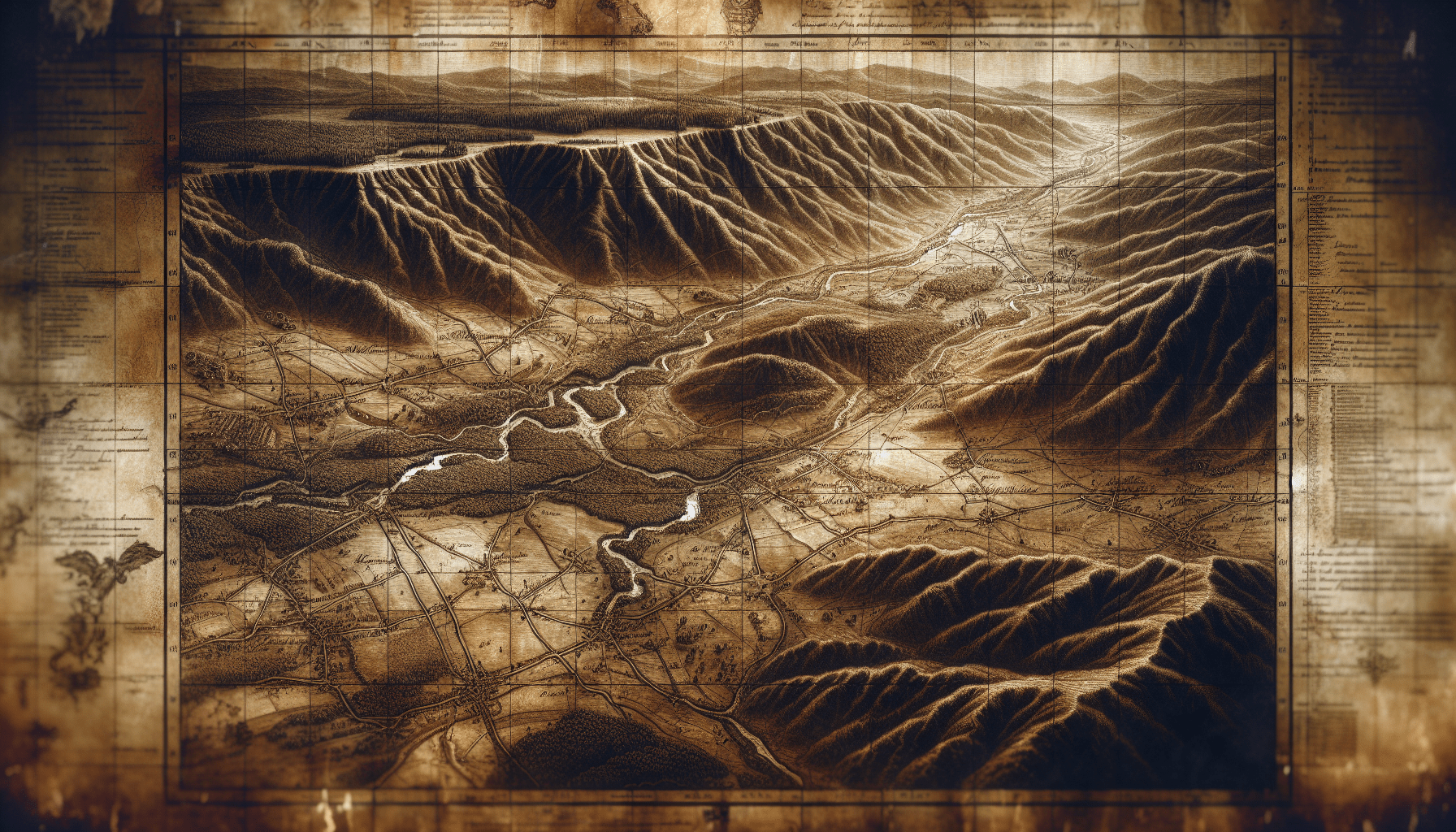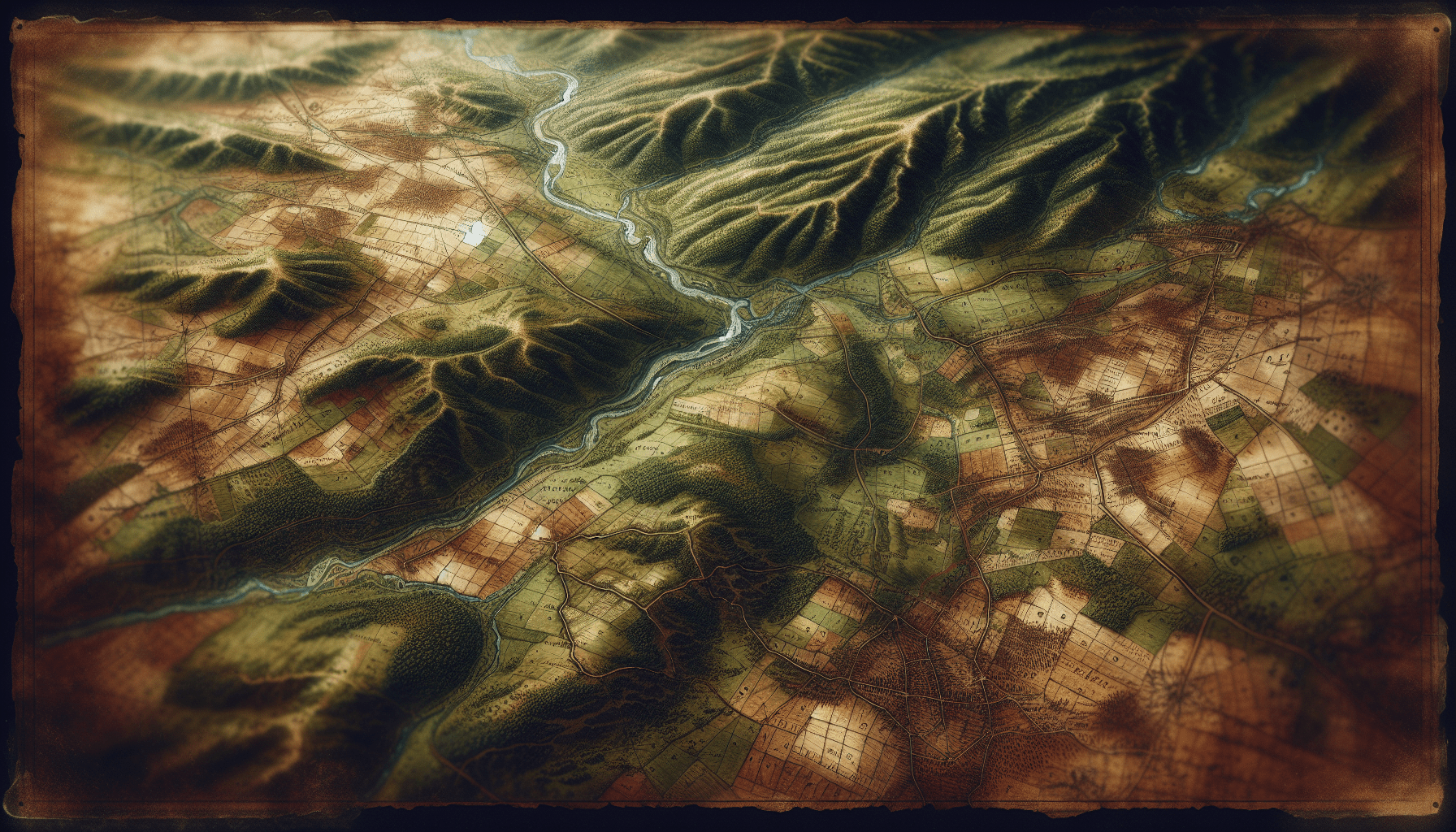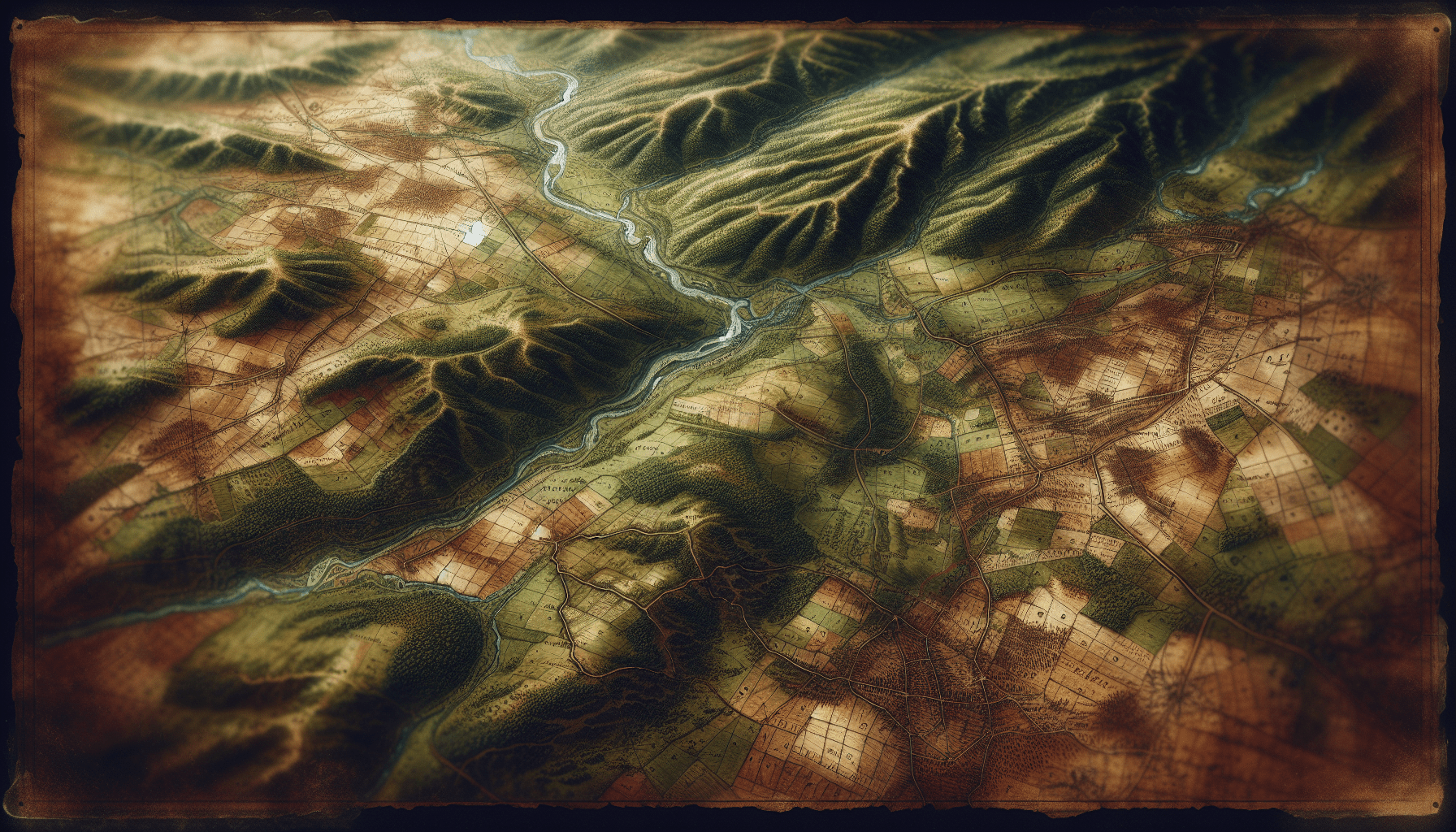The Battle of Austerlitz, occurring in 1805, represents a pivotal moment in military history, culminating in a significant triumph for Napoleon’s Grande Armée. This battle, also referred to as the Battle of the Three Emperors, not only marked the end of the War of the Third Coalition but also showcased Napoleon’s tactical brilliance, often hailed as a paragon of military strategy. The successful maneuvering and psychological tactics employed by Napoleon against Austrian and Russian forces ultimately led to the Treaty of Pressburg and a swift conclusion to hostilities.
This article systematically explores various facets of the Battle of Austerlitz, touching upon its historical context, the formation and capabilities of Napoleon’s Grand Army, and the intricate phases of the battle itself. Key turning points and strategies will be analyzed to demonstrate how Napoleon’s innovative approach resulted in a decisive victory, reinforcing his legacy as an unparalleled commander during the Napoleonic Wars.
Battle Overview
Definition and significance of the Battle of Austerlitz
The Battle of Austerlitz, often referred to as the Battle of the Three Emperors, stands as a seminal event in the annals of military history. It represents not merely a clash of armies but a confluence of strategic brilliance and the consequences of political machinations. This engagement is significant due to its decisive nature, wherein the forces of Napoleon Bonaparte decisively defeated the combined armies of Austria and Russia on December 2, 1805. Such an outcome not only solidified Napoleon’s reputation as a preeminent military tactician but also marked the decline of the Third Coalition against France, fundamentally altering the political landscape of Europe.
Date and location of the conflict
The conflict unfolded on December 2, 1805, near the town of Austerlitz in the Austrian Empire, situated in what is now the modern-day Czech Republic. The choice of this location was far from arbitrary; its geography provided a tactical advantage that Napoleon would exploit masterfully. The battlefield, characterized by rolling hills and key strategic points, offered multiple avenues for engagement, ultimately allowing Napoleon to execute his ambitious plan with precision.
Key players involved in the battle
The Battle of Austerlitz featured several prominent leaders whose decisions and strategic acumen played critical roles in the conflict. On one side was Napoleon Bonaparte, commanding the French Grande Armée, noted for its discipline, training, and innovative tactics. Opposing him were Tsar Alexander I of Russia and Holy Roman Emperor Francis II of Austria, who jointly commanded the Allied forces. Their collective efforts were hampered by a lack of coordination and strategic miscalculations, which would ultimately contribute to their downfall on that fateful day.
Outcome
Immediate results of the battle
The immediate results of the Battle of Austerlitz were unequivocally favorable for France, with the French Grande Armée inflicting substantial losses on the Allied forces. The battle culminated in the surrender of around 36,000 troops and the retreat of the remaining forces. The depth of the French victory was underscored by the psychological impact it had on the coalition forces. This defeat not only demoralized the Allies but also signified a shift in the balance of power in Europe, leaving France predominant on the continent.
Impact on France and the reconfiguration of Europe
The aftermath of the battle heralded a significant reconfiguration of European politics. Following the victory, Napoleon was able to consolidate his power, leading to the dissolution of the Third Coalition against France. The victory at Austerlitz effectively paved the way for the Treaty of Pressburg, which saw Austria cede substantial territories and recognize the influence of the French Empire in Central Europe. Thus, France emerged as a dominant power, reshaping alliances and enmities across the continent and setting the stage for further conflicts.
Details of the Treaty of Pressburg
The Treaty of Pressburg, signed shortly after the battle on December 26, 1805, formalized the results of the conflict. Under its terms, Austria recognized the dissolution of the Holy Roman Empire and ceded territories such as Venetia to the Kingdom of Italy and portions of Dalmatia to the French. Furthermore, Austria was compelled to renounce any ambitions to intervene on behalf of the other states in the coalition or oppose French interests in the region. The treaty not only consolidated Napoleon’s gains but laid the groundwork for subsequent geopolitical developments in Europe.

Historical Significance
Comparison to other historical battles
The Battle of Austerlitz is often compared to other great military engagements throughout history, such as the Battle of Cannae and Gaugamela. These battles share a commonality in their strategic implication and the virtuosity displayed by their respective commanders. Austerlitz is lauded for Napoleon’s masterful orchestration of battlefield maneuvers and his adept exploitation of enemy weaknesses, making it a classic study of military strategy. The profound impact of the battle on subsequent military engagements and doctrines reinforces its place as a landmark event.
Lessons learned from Austerlitz
The lessons from Austerlitz are manifold, providing insights into the nature of warfare and leadership. Foremost among them is the importance of strategic deception, as exhibited by Napoleon’s feigned weaknesses that lured the Allies into a precarious position. Additionally, the significance of troop coordination, logistical planning, and the role of timely decision-making in combat scenarios became apparent. Austerlitz has since served as a reference point for military academies, highlighting the critical interplay between strategy, leadership, and the chaotic nature of warfare.
Long-term effects on military strategy
The long-term effects of Austerlitz on military strategy are profound. The battle demonstrated the efficacy of rapid maneuver warfare and the capabilities of a well-organized command structure. It catalyzed a shift away from traditional linear formations toward more flexible, dynamic tactics that emphasized speed and surprise. Furthermore, the principles of concentration of force, logistics, and the psychological aspects of warfare gleaned from Austerlitz influenced military doctrines well beyond the Napoleonic era, shaping future conflicts throughout the 19th and 20th centuries.
Background Context
Unrest in Europe following the French Revolutionary Wars
The backdrop of the Battle of Austerlitz is steeped in the tumult and unrest that marked Europe following the French Revolutionary Wars. The revolutionary fervor had not only engendered radical political changes in France but had also cascaded into widespread instability across the continent. The ideological clash between monarchist forces and the revolutionary ideals championed by the French Republic set the stage for international conflict, with various nations feeling threatened by the expansionist policy of Revolutionary France.
Formation of the Coalition against France
In response to the escalating threat posed by France, a series of coalitions was formed among European powers, aiming to curtail the spread of revolutionary ideals and check French expansionism. The Third Coalition, formed in 1805, brought together Britain, Russia, Austria, and several smaller states, galvanized by a shared intent to limit Napoleon’s influence. However, the disparate interests and strategies of these allied nations often undermined their effectiveness, illustrating the complexities involved in coalition warfare.
Role of Austria, Russia, and Britain in the conflict
Austria, Russia, and Britain played pivotal roles in the conflict that culminated in the Battle of Austerlitz. Austria, as a historical rival of France, led the coalition effort and sought to reclaim territories lost in previous conflicts. Russia, under Tsar Alexander I, provided substantial military support, bolstered by a desire to enhance its standing in Europe. Britain, while contributing financially and undertaking naval actions, was often limited in its operational capacity on the continent due to its geographical isolation. The interplay of these powerful nations exemplifies the intricate web of alliances and rivalries that shaped the course of the Napoleonic Wars.

Grand Army Formation
Evolution from invasion force to Grande Armée
Napoleon’s Grande Armée was born out of necessity, evolving from an invasion force intended to launch an offensive against Great Britain to a formidable military entity capable of engaging multiple foes across Europe. Initially assembled in anticipation of an assault on England, the army rapidly adapted to confront the coalition forces as tensions escalated. This transition reflected not only Napoleon’s strategic agility but also his ability to unify disparate units into a cohesive fighting force.
Composition and strength of Napoleon’s forces
By the time of the Battle of Austerlitz, the Grande Armée boasted a substantial contingent of approximately 350,000 men, drawn from various regions within the French Empire and allied territories. The army consisted of well-trained infantry, cavalry, and artillery units, showcasing a diverse range of military capabilities. This formidable composition allowed Napoleon to implement complex tactics, ensuring adaptive responses to the dynamic battlefield conditions that characterized Austerlitz.
Training and readiness prior to the battle
Preparation for the battle entailed meticulous training and logistical planning. Troops were well-drilled in Napoleonic tactics, emphasizing the integration of different arms for combined operations. Furthermore, the emphasis on rapid maneuvers, discipline, and decisive leadership contributed to the readiness of Napoleon’s forces. The army entered the battlefield with a sense of cohesion and morale bolstered by a string of prior victories, setting the stage for the success that would soon follow at Austerlitz.
Psychological Strategy
Napoleon’s tactics of feigning weakness
A hallmark of Napoleon’s military strategy was his adeptness at psychological manipulation. In the months leading to the battle, he orchestrated a campaign of disinformation, projecting an image of a weakened army eager for peace. By feigning weakness, he successfully masked his true intentions and the operational strength of his forces. This psychological gambit created an environment of overconfidence among the Allied command, leading them to underestimate the capabilities of the French army.
Luring Allied forces into a trap
Napoleon’s strategy further relied on luring his opponents into unfavorable tactical positions. By creating the illusion of vulnerability, he enticed the Allied forces into an offensive posture. This calculated move was pivotal as it enabled him to execute a counterattack at the opportune moment. The sense of encirclement that seized the Allied armies during the engagement became a testament to the success of this strategy, culminating in their eventual rout.
The role of intelligence and misinformation
Intelligence played a crucial role in shaping the outcome of the Battle of Austerlitz. Napoleon employed a network of spies and scouts to gather insights on Allied dispositions and intentions. The effectiveness of this intelligence network amplified the impact of his psychological tactics, as the Allied leaders misjudged the French maneuvers amidst the misinformation. This combination of strategic foresight and deception exemplified the importance of intelligence in military operations.

Battle Phases
Key locations of engagement: Telnitz, Sokolnitz, and Pratzen Heights
The battlefield of Austerlitz was characterized by its distinct geographic features, with key locations such as Telnitz, Sokolnitz, and Pratzen Heights bearing witness to intense combat. Each location represented vital strategic points that both sides aimed to control. The villages of Telnitz and Sokolnitz became focal points for fierce fighting, while the high ground of Pratzen Heights provided a vantage point that could tilt the balance in favor of its occupier.
Nature of combat in each phase of battle
Combat at Austerlitz unfolded in phases, marked by shifting fortunes and the ebb and flow of assaults. The initial engagements at Telnitz witnessed fierce exchanges as Allied forces sought to capture the village, while French defenders fought tenaciously to retain their positions. In subsequent phases, as the battle escalated, engagement patterns shifted, with concentrated attacks emerging at Sokolnitz and culminating in the decisive struggle for control of Pratzen Heights. Each phase illustrated the unpredictability of warfare and the adaptive responses required of both commanders.
Impact of terrain on battle strategies
The terrain of Austerlitz played a significant role in shaping battle strategies and outcomes. The undulating landscape provided natural defensive positions, allowing both sides to exploit high ground for artillery placements and defensive formations. The challenges presented by the terrain influenced troop movements and engagement tactics, necessitating innovative approaches to maneuver warfare. Napoleon’s masterful use of the terrain facilitated his advantage, enhancing the impact of his counteroffensives and tactical surprises.
Turning Points
French tactics to regain lost positions
Critical to the French success were adaptive tactics that enabled the regaining of lost positions throughout the battle. As momentum shifted in favor of the Allies, Napoleon quickly recalibrated his approach, relying on his reserves to strike back. By addressing weaknesses in his lines and launching counterattacks, he effectively recaptured essential locations, turning the tide of the conflict. The dynamic ability to pivot strategically is emblematic of Napoleon’s overall military philosophy.
Effective use of cavalry and infantry maneuvers
The interplay between cavalry and infantry was fundamental to the unfolding battle dynamics. Napoleon expertly coordinated the two arms, executing rapid assaults that disrupted Allied formations. The French cavalry was particularly effective in exploiting vulnerabilities, often attacking enemy flanks at decisive moments. This harmonious working relationship underscored the importance of coordination between different branches of the military and showcased the flexibility required in adapting tactics during combat.
Factors leading to Allied retreat and disarray
Several factors converged to spell disaster for the Allied forces, culminating in their retreat and disarray. Poor communication and lack of cohesion among the Allied commanders hampered effective decision-making, causing delays and misalignments in their strategies. Furthermore, the psychological impact of Napoleon’s aggressive maneuvers contributed to a loss of morale among the troops, leading to confusion and panic. The culmination of these factors allowed the French to exploit weaknesses, ultimately leading to a rout of the Allied forces.
Napoleon’s Military Tactics
Importance of deception and surprise
Central to Napoleon’s military tactics at Austerlitz was the deliberate use of deception and surprise. By misleading the enemy about his true capabilities and intentions, he was able to create opportunities for sudden attacks that caught the Allies off guard. The execution of surprise maneuvers not only dislocated enemy formations but also instilled a sense of fear and uncertainty, eroding the effectiveness of the Allied command. This hallmark of his tactical approach illustrated the value of psychological strategies in military success.
Coordination among troops during the battle
The efficiency of Napoleon’s forces was manifested through remarkable coordination among different troop elements. This inter-unit cooperation underpinned the success of his tactics, as infantry, cavalry, and artillery worked in concert to execute complex maneuvers. Clear lines of communication and well-practiced commands ensured that troops could adapt swiftly to changing battlefield conditions, allowing for a cohesive and synchronized effort that overwhelmed the Allied forces.
Analysis of specific strategies employed
An analysis of the specific strategies employed by Napoleon reveals a deeply calculated approach to warfare. His decision to engage the Allies on December 2 was influenced by a comprehensive understanding of their vulnerabilities, including logistical limitations and shared hesitations among the commanders. The engagement’s orchestration utilized feigned strengths and rapid redeployments, allowing for targeted strikes on key positions. This meticulous planning combined with a thorough execution exemplified Napoleon’s strategic genius.
Conclusion
Summary of the battle’s significance
In summation, the Battle of Austerlitz stands as a watershed moment in the realm of military history, representing the confluence of tactical innovation and strategic vision. The resounding victory achieved by Napoleon not only suppressed the Third Coalition but also established France as a predominant power in Europe. Its significance resonates through subsequent military doctrines and highlights the enduring complexities of coalition warfare.
Reflection on Napoleon’s military genius
Napoleon’s execution of the battle reflects the quintessence of military genius—an alchemical blend of audacity, foresight, and adaptability. His ability to manipulate the psychological landscape, coupled with a profound understanding of logistical dynamics and troop movements, cemented his place as one of history’s most formidable military leaders. Austerlitz exemplifies how a singular battle can alter the trajectory of history through the actions of an astute commander.
Enduring lessons from the Battle of Austerlitz
The enduring lessons gleaned from the Battle of Austerlitz continue to inform military thought and strategy to this day. The interplay between deception and the psychological dimension of warfare is as relevant now as it was then. From the importance of effective communication and troop coordination to the necessity of thorough reconnaissance and intelligence, the battle encapsulates fundamental tenets of warfare. These lessons underscore the timeless nature of military strategy, informing both historical analysis and contemporary applications in modern conflicts.
